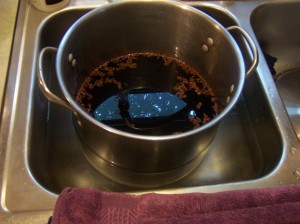This year, my friends Arthur Haines and Nicole Leavitt from the Delta Institute of Natural History were kind enough to share their Fox Grapes with me and my wife. We split the grapes equally, Lisa Marie making jelly and me, of course, making grape mead, which is also called pyment. I thought about adding some herbs to this mead, but these grapes are so amazing I wanted to let them speak for themselves. Along the way, I had a bit of a mishap and had to readjust. Read on for details.
Fox Grapes (Vitis labrusca)
Fox grapes are native to North America’s east coast, and are one of the precursors to the famous Concord grape (which I used in last year’s Chaga Pyment). However, these Fox Grapes are larger than the feral Concord grapes we foraged last year:
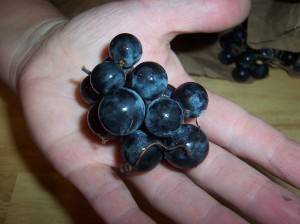
After Lisa Marie made her grape jelly, I had about 3 pounds of stemmed grapes to work with:

Once they were stemmed and cleaned, we got out the juicer and I ended up with nearly a half gallon of grape juice:
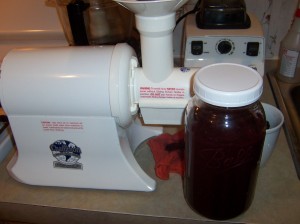
One thing to know when working with wild grapes is that they contain tartrate, which is a substance that is bitter and can irritate the skin and mucous membranes. If you eat more than a few wild grapes, you are likely to notice a slight burning or tingling sensation at the back of your tongue or the roof of your mouth; this is caused by the tartrate. The solution is to stick the grape juice in the refrigerator overnight, so the tartrate will tend to settle (in crystal form). Note that in mead, the tartrates will settle out during fermentation and end up as part of the sediment…. so I won’t use the sediment from this batch of mead for anything.
Oops! Too much honey!
I started with a strong chaga decoction, and poured the grape juice in with the chaga. However, when I added the honey, I had a mishap, and poured too much honey into the pot, giving me an off-the-chart alcohol potential of about 24%:
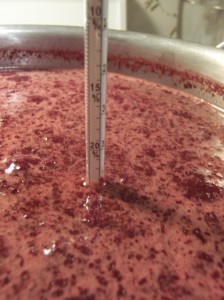
So I had a decision to make. I could either have a VERY OBNOXIOUSLY sweet mead, or I could split this into 2 different batches. I had an open carboy so I chose the latter course, which of course will weaken the grape flavor a bit. Rather than make 2 more or less identical batches, I decided to make a Strong Fox Pyment with most of the grape juice, and a Weak Fox Pyment with about half of the grape juice. To accomplish this I poured off about a gallon of the oversweet must and set it aside:
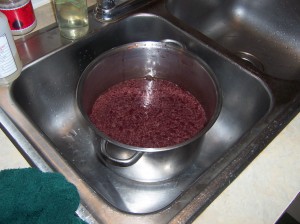
Then, I used the remaining 2 gallons of oversweet must, added more water (and a bit more honey) to get me to a more reasonable alcohol potential of 17%:
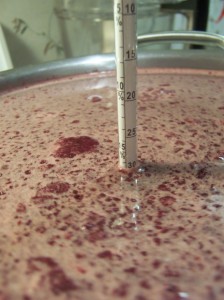
I pitched the yeast and poured it into the first carboy. Then I used the 1 gallon (or so) of the remaining oversweet must, put it into my stockpot, added more water and honey to get the Weak Fox Pyment to about 16% alcohol potential:

I then pitched a second packet of yeast and added the must to another carboy, giving me to similar batches of pyment:
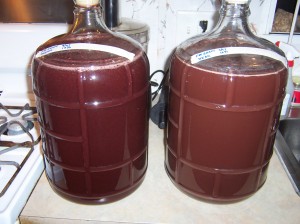
When it’s all said and done, the Strong Fox Pyment should have a darker color and a stronger grape flavor than the Weak Fox Pyment, but they should be quite similar. Time will tell!
UPDATE, Jan 11
I racked the Weak Fox Pyment today, and it is a good dry-ish flavor at 2% remaining alcohol potential, which means it is 14% ABV. It is a lovely light color, crisp with a hint of grapes to it. Almost exactly what I was hoping for! The Strong Fox Pyment doesn’t seem quite ready to rack just yet.
UPDATE, March 31
Finally racked the Strong Fox Pyment. It too ended up at 2% remaining alcohol potential, making it 15% ABV. The color is much darker, and of course the grape flavor is stronger. Awesome!


